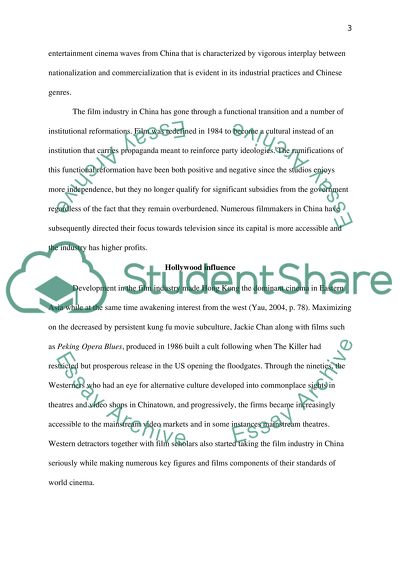Cite this document
(“How important has Hollywood been in influencing Chinese filmmaking Essay”, n.d.)
How important has Hollywood been in influencing Chinese filmmaking Essay. Retrieved from https://studentshare.org/visual-arts-film-studies/1692078-how-important-has-hollywood-been-in-influencing-chinese-filmmaking-since-the-1980s
How important has Hollywood been in influencing Chinese filmmaking Essay. Retrieved from https://studentshare.org/visual-arts-film-studies/1692078-how-important-has-hollywood-been-in-influencing-chinese-filmmaking-since-the-1980s
(How Important Has Hollywood Been in Influencing Chinese Filmmaking Essay)
How Important Has Hollywood Been in Influencing Chinese Filmmaking Essay. https://studentshare.org/visual-arts-film-studies/1692078-how-important-has-hollywood-been-in-influencing-chinese-filmmaking-since-the-1980s.
How Important Has Hollywood Been in Influencing Chinese Filmmaking Essay. https://studentshare.org/visual-arts-film-studies/1692078-how-important-has-hollywood-been-in-influencing-chinese-filmmaking-since-the-1980s.
“How Important Has Hollywood Been in Influencing Chinese Filmmaking Essay”, n.d. https://studentshare.org/visual-arts-film-studies/1692078-how-important-has-hollywood-been-in-influencing-chinese-filmmaking-since-the-1980s.


